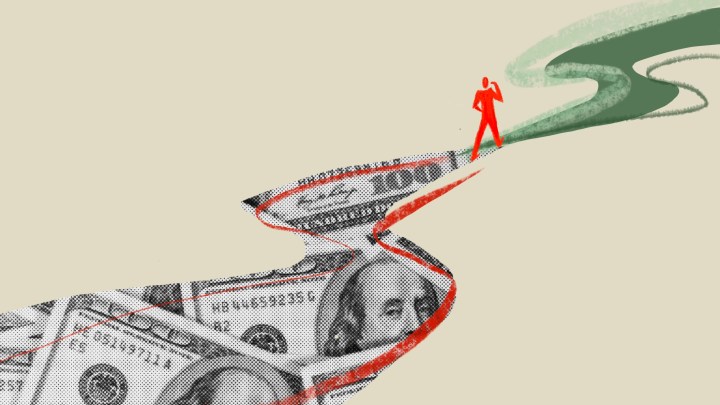
Can you negotiate your credit card rate?
Share Now on:
Can you negotiate your credit card rate?

At the end of 2021, people in the United States collectively had $860 billion in credit card debt, with an average interest rate of 14.56%, as of February 2022. Since last year, inflation is costing families $296 more per month on average. To keep up with increasing expenses, some people are relying more on credit cards.
But credit cards often come with high interest rates, and that leaves a lot of people in the “interest rate hamster wheel,” which prevents them from getting out of debt, according to Eli Snyder, a credit counselor at Family Means, a nonprofit organization in Minnesota that provides financial counseling.
What a lot of people don’t realize is that they can negotiate the interest rate that they pay on their credit cards.
Many credit card issuers have what’s called an internal hardships program, where borrowers can call their issuer and ask for temporary relief. Often, a bank will lower interest rates for a brief period if the borrower is facing a serious financial hardship like job loss, injury or divorce.
Another route is to talk to someone like Snyder. There are many nonprofit organizations that provide credit counseling, like Family Means, which are all members of the National Foundation for Credit Counseling, a larger nonprofit that works as an intermediary between banks and smaller counselors to renegotiate credit rates.
The NFCC is funded, in part, by banks like Chase, Bank of America, and Wells Fargo. Banks fund the NFCC because, as Snyder puts it, “it scratches everybody’s back. It helps the clients, it helps the creditor get fully repaid, as opposed to people walking away and going the bankruptcy route.” And big banks also get a tax write off for being part of these programs, Snyder said.
“I’m sure it helps them on the public relations front too,” Snyder said. Banks get a boost in their reputations for helping people get out of debt, despite them setting the interest rates in the first place.
The NFCC negotiates with banks to land on lower interest rates and shares those rates with member nonprofits. The smaller member organizations can work directly with clients to get people access to those rates, and according to Snyder, get off that hamster wheel.
One of the main ways credit counselors do this is by enrolling clients in a debt management program, which accesses those NFCC lowered rates and consolidates debt. Though all NFCC member organizations offer free credit counseling, getting access to lower rates through a debt management program costs a service fee.
At Family Means, the average debt of a client entering the debt management program is $20,576, with an average of five credit cards. According to Snyder, 81% of clients are able to pay off their debt within the five-year span of the program. Many of Snyder’s clients come in with interest rates nearing 30%, and through accessing lower rates negotiated by the NFCC, clients pay their debt at an interest rate usually between 4% to 6%, Snyder said.
Some banks even drop down to 1% depending on the client and the bank. The negotiated amount depends on a system of “tiers of hardship,” meaning borrowers in the most dire situations will qualify for the lowest rates.
Debt management programs are federally required to be completed in 60 months or less. When a client enters a debt management program, the credit card is closed to further spending, and once the debt is paid, the account will be closed. But, Snyder said this doesn’t impact the client’s ability to open a credit card with the same company in the future. “It’s not like these creditors hate you for doing this. This is a program they created through our national foundation to help people,” Snyder said.
But, if a client does open a credit card with the same company in the future, they can’t expect that 4% to 6% interest rate for the functioning card. The negotiated rate only applies when they are enrolled in the debt management program, and closing a credit card can impact credit scores, though it doesn’t always. But, for people in debt repayment programs, scores tend to go up because debt management has improved, Snyder said.
In the beginning of the pandemic, people were paying down their debts — taking advantage of the federal student loan pause, stimulus checks, and lower interest rates. But now as credit card spending recovers and interest rates rise, debt management services are becoming more popular, “and with inflation going through the roof, a lot more people are reaching out,” Snyder said.
There’s a lot happening in the world. Through it all, Marketplace is here for you.
You rely on Marketplace to break down the world’s events and tell you how it affects you in a fact-based, approachable way. We rely on your financial support to keep making that possible.
Your donation today powers the independent journalism that you rely on. For just $5/month, you can help sustain Marketplace so we can keep reporting on the things that matter to you.


















